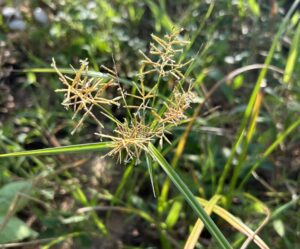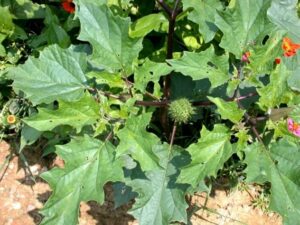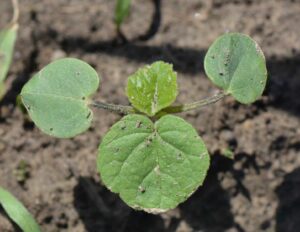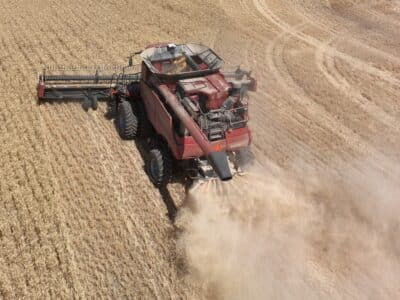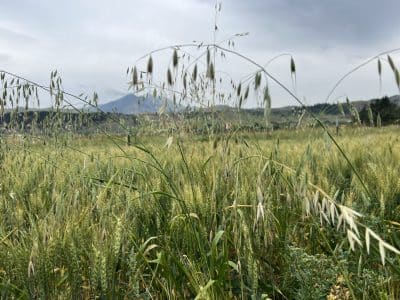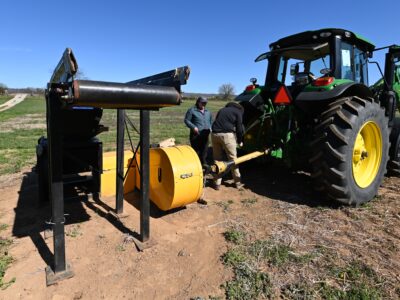Apocynum cannabinum L.
Also known as Indian hemp, wild cotton.
Note: This information is based on experience in the Mid-Atlantic states; recommendations in other regions may vary.
Hemp dogbane is a persistent perennial broadleaf weed in row crops, pastures, or hay fields, often growing in patches. It can reproduce by seed, and from buds on creeping rootstocks. Rootstocks are capable of overwintering, thus making it difficult to control them once they are established. Hemp dogbane is native to North America and considered to have certain beneficial attributes, such as a source of fiber.
Identifying Features
Every part of the plant, mainly the stem, excretes a white/milky sap when broken in two. The stems are initially green but as they mature they develop a red tint. Stems are often three feet tall. The plant’s root structure is a taproot with deep, creeping horizontal roots. Stems and leaves secrete a milky sap when broken. Sprouts emerging from the underground horizontal rootstock may be confused with common milkweed (Asclepias syriaca) emerging shoots. However, the leaves of hemp dogbane are much smaller than those of common milkweed. When mature, these weeds may be distinguished by the branching in the upper portions of the plant that occurs in hemp dogbane, and also the smaller size of this weed compared to common milkweed.
The plant develops slender, scythe-shaped seed pods (seed pods are in pairs) which contain thin, flat seeds with a tuft of hairs. The hairs aid in wind dispersal. The waxy cuticle found on the leaf surface affects the uptake of systemic herbicides.
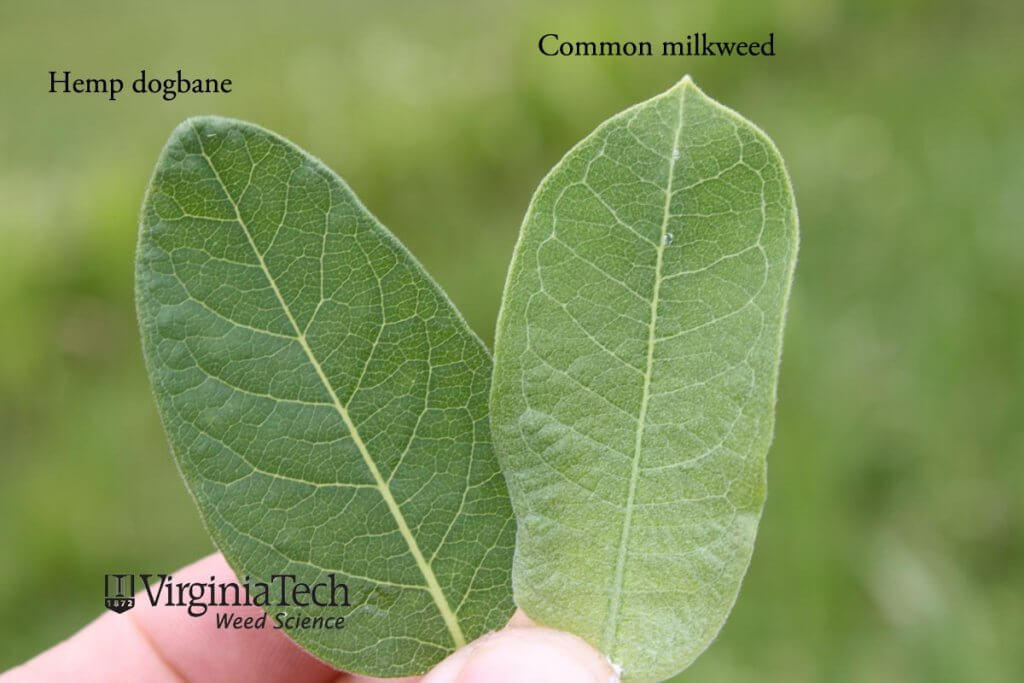
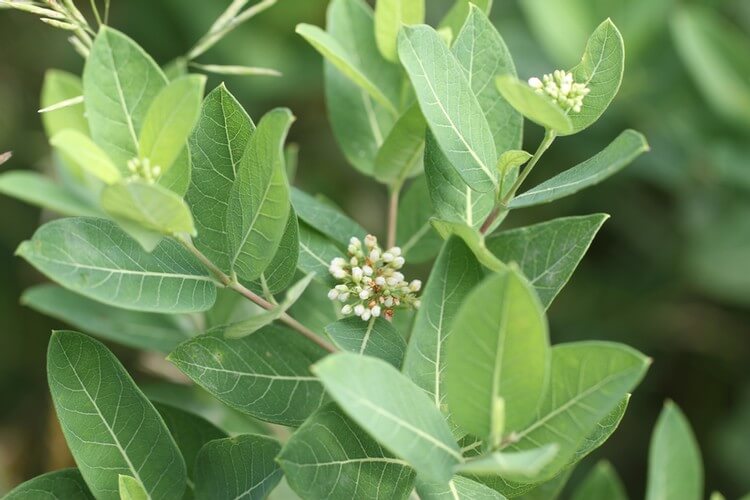
Seed Production
Seed pods are produced in pairs, with approximately 20 slender pods per plant. Pods are initially green and then turn to red and eventually dark brown at maturity. Pods contain an average of 200 small, elongated seeds (about 6-10 mm in length). The seeds are flat and brown and have some silky hairs that aid dispersal.
Initial infestations often start with seeds, but once seedlings are established, within field spread is by creeping rootstock. Ten-day old seedlings can develop perennial capabilities.
Herbicide-Resistance
None reported.
Management
Seedlings may be selectively controlled by certain PRE herbicides, but infestations in crops typically arise from regrowth of established vegetative propagules beneath the soil, which have been reported to form within a month after seedling emergence. Mechanical control by repeated removal of top growth is possible where cultural practices allow; however, tillage is not a viable option due to fragmentation and resultant multiplication of vegetative propagules. Therefore, effective control is limited to applying selective or non-selective systemic herbicides. In general, late bud stage or early bloom stage is a good window to apply such herbicides as long as the label of the respective herbicide allows such an application timing in the particular crop. When possible, glyphosate may be spot applied between crops to manage these weeds. Adding a surfactant and liquid nitrogen or AMS can improve weed control.
Corn
The use of glyphosate in Roundup Ready corn is perhaps the most effective approach for control of hemp dogbane in this crop. Glufosinate (Liberty) can suppress this weed in LibertyLink crops. Selective broadleaf herbicides such as fluroxypyr (Starane Ultra) and dicamba (Banvel, Clarity) are somewhat effective in conventional corn. Tank mixtures such as diflufenzopyr plus dicamba (Distinct), prosulfuron (Peak) plus 2,4-D or dicamba, and nicosulfuron (Accent Q) plus dicamba can also provide fair control of these weeds.
Sorghum
Herbicides such as dicamba and 2,4-D may provide fair selective control of hemp dogbane. Herbicides such as fluroxypyr (Starane Ultra) and halosulfuron plus dicamba (Yukon) may also provide selective control of this weed in sorghum.
Soybean
Chemical control is best with glyphosate in Roundup Ready varieties. Dicamba in Xtend soybeans or 2,4-D choline in Enlist soybeans will provide a modest level of control. There are no selective herbicides to control this weed in conventional soybeans. Using a weed wiper to glyphosate by taking advantage of the height difference between the crop canopy and the weed is also an effective strategy to control this weed in conventional soybean.
Small Grains
Selective herbicides such as fluroxypyr (Starane Ultra), dicamba (Banvel/Clarity), and 2,4-D may control these weeds if applied at the proper stage. Otherwise, application of glyphosate or dicamba as a harvest aid or during the same fallow season may provide better control of hemp dogbane.
Perennial Forages
In alfalfa, the use of glyphosate in a Roundup Ready variety is perhaps the most effective approach to control hemp dogbane. Selective herbicides labeled for alfalfa do not provide satisfactory control of established plants.
In pasture and hay fields, the herbicides picloram plus fluroxypyr (Surmount) and fluroxypyr plus triclopyr (Pasture-Gard) can provide selective control of this weed; however, sequential applications may be necessary for successful control. Sequential applications of 2,4-D plus dicamba may also provide fair control of this weed. A weed wiper may also be used to control hemp dogbane in forage crops. In forages, hemp dogbane is considered toxic to animals in both the fresh and dry forms.
This content was presented in the “Mid-Atlantic Field Crop Weed Management Guide” (2020), Penn State Ag Communications, AGRS-136

